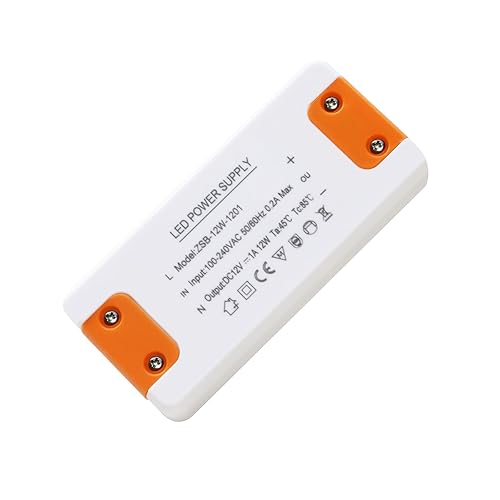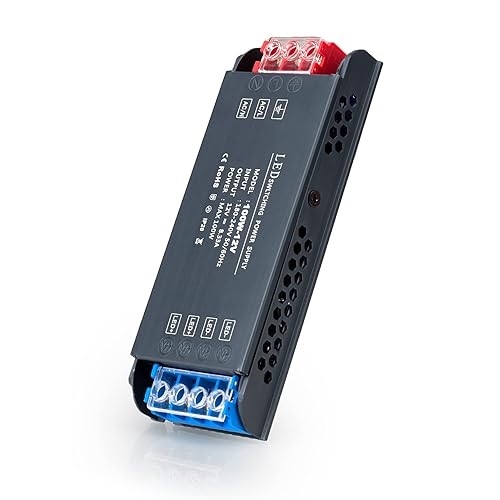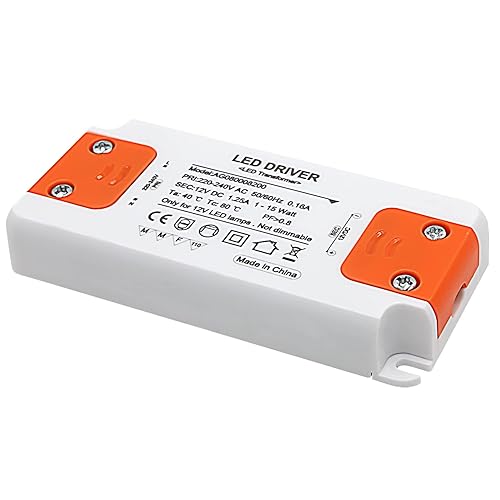How to Choose a 220V 12V Transformer in 2025? Guide and Comparison
220V 12V transformers are essential for powering various low-voltage devices from standard household sources. Whether for home, automotive, or industrial applications, choosing the right transformer can ensure optimal energy efficiency and prevent overvoltage or undervoltage that could damage your devices.
Our TOP 3
ZAKVOP

Pros
- Easy to install
- Affordable price
Cons
- Limited to LED lighting
Specs
BRIMETI

Pros
- Good heat dissipation
- Multiple protection
Cons
- Mixed reviews on heating capability
Specs
Selection Criteria
Power (Wattage)
The first consideration when buying a 220V 12V transformer is the nominal power expressed in watts (W). Ensure the transformer’s power slightly exceeds the total consumption of the devices you want to power. For example, to power a 50W LED system, choose a transformer offering at least 60W for an adequate safety margin.
Energy Efficiency
A good transformer should convert current with minimal losses. Look for models with efficiency certifications, such as the 80 PLUS standard, which guarantees an energy efficiency over 80%.
Type of Transformer
Transformers can be linear or switching. Linear transformers offer stable conversion with low electronic noise while switching models are more compact and efficient for variable loads. Choose based on your specific needs: stability for fixed installations or compactness for mobile applications.
Additional Features
Advanced features, like protection against overloads, short circuits, and overheating, are crucial to prolong the life of your connected devices. Also, transformers with easy-to-connect terminals or pre-installed wires can simplify installation.
Common Mistakes
Overpowering
Choosing a transformer with too much power for the need may seem inconsequential but can lead to efficiency losses and higher initial costs. Accurately calculate your power needs for a balanced choice.
Ignoring Thermal Dissipation
Transformers generate heat during operation. Ignoring this dissipation can lead to overheating and premature failure. Ensure your transformer has an adequate cooling mechanism or a design that promotes thermal dissipation.
Comparison of our 3 favorite products
ZAKVOP- Small and compact for specific LED installations

The ZAKVOP 220V to 12V transformer is designed to power LED installations with ease. With a maximum power of 12 watts, this model is perfect for modest LED applications. Due to its compact size, it is easy to install in confined spaces.
Pros
- Easy to install due to its small size
- Budget-friendly option
- Compatibility with a variety of LED lamps
Cons
- Power limited to 12W
- Limited to LED installations
BRIMETI- High capacity with ultra-slim design

The BRIMETI transformer offers an impressive power of 100 watts, coupled with an ultra-slim design. Ideal for installations requiring higher capacity, it ensures efficient heat dissipation and protection against various electrical risks.
Pros
- High power capacity (100W)
- Excellent thermal dissipation
- Multiple integrated protections
Cons
- Overheating discussed among users
- Non-dimmable
AGOTD- Noise-free and flicker-free design

AGOTD offers a transformer providing a quiet and flicker-free LED lighting experience. Its design with no minimum load and protection functions places this model at the heart of interior decoration or specific lighting projects.
Pros
- Operates without noise and flickering
- Compact and easy to install
- No minimum load required
Cons
- Slow startup noted by some users
- Power limited to 15W
Practical Tips
- Adapt power based on the season: Devices like outdoor lighting systems may require more power in winter. Anticipate these variations to avoid power supply issues.
- Double-check compatibility: Before purchasing, verify the compatibility of connectors and voltage specifications to prevent any compatibility problems.
- Professional installation: For critical or complex applications, consider professional installation services to ensure a safe and compliant setup.
FAQ
See also: the best battery testers